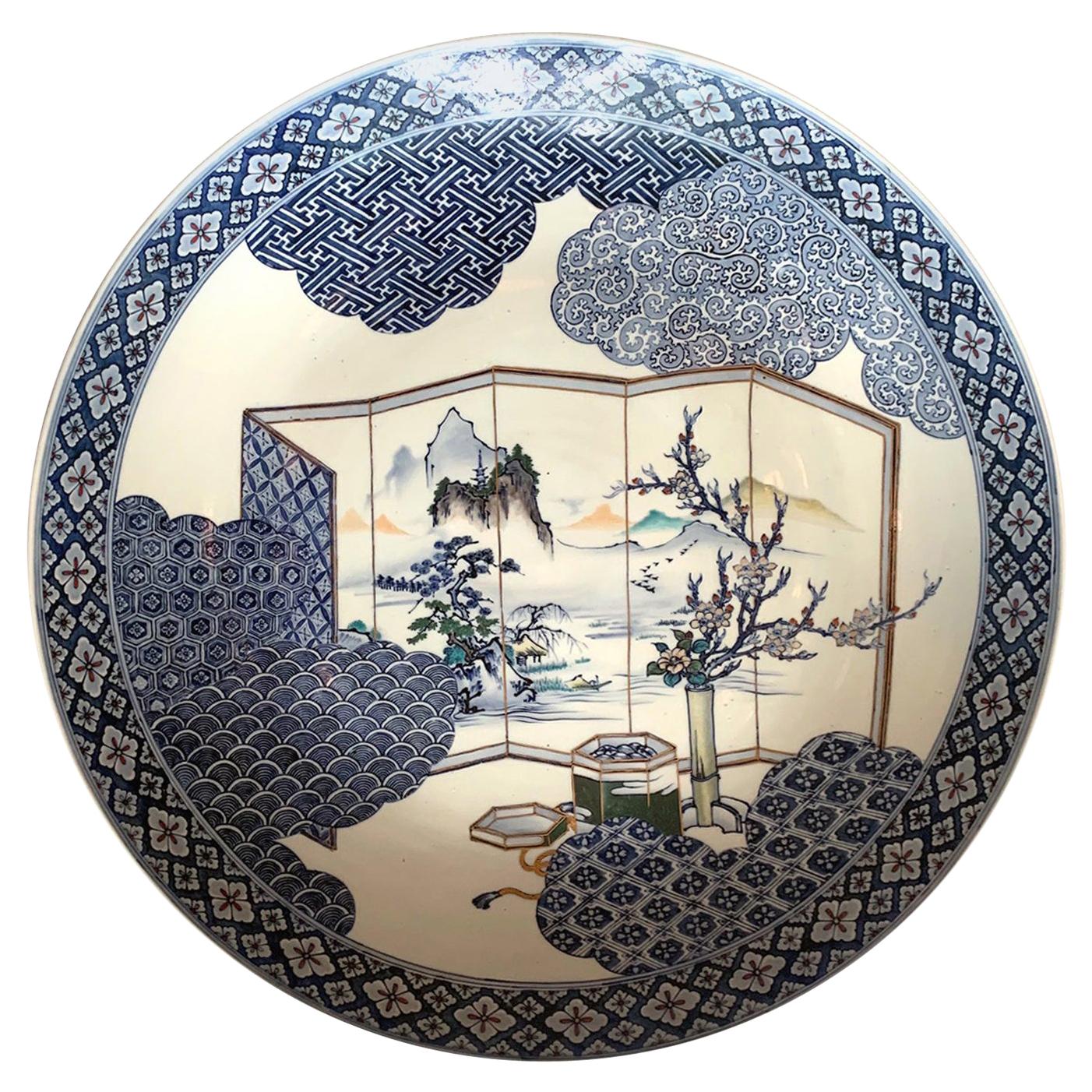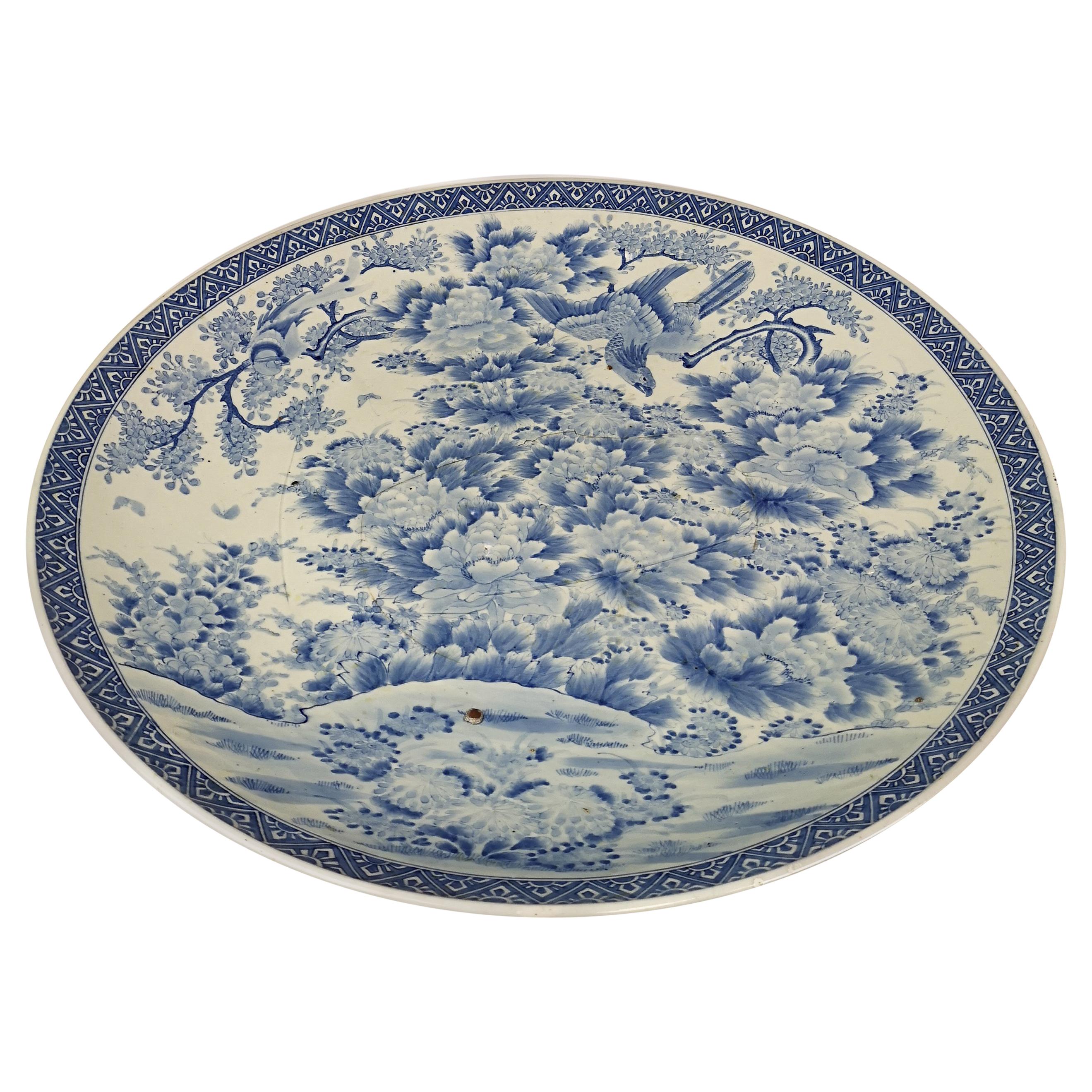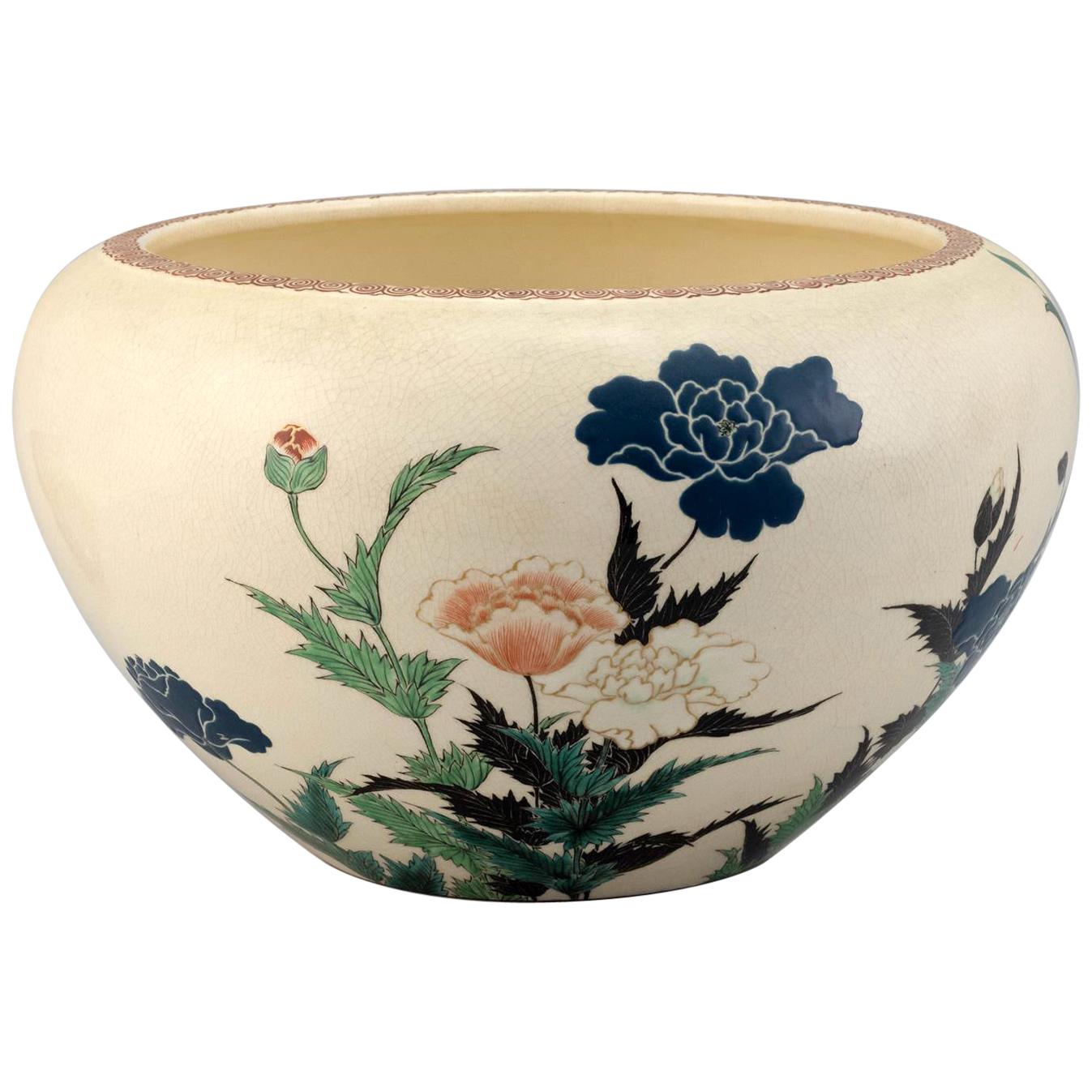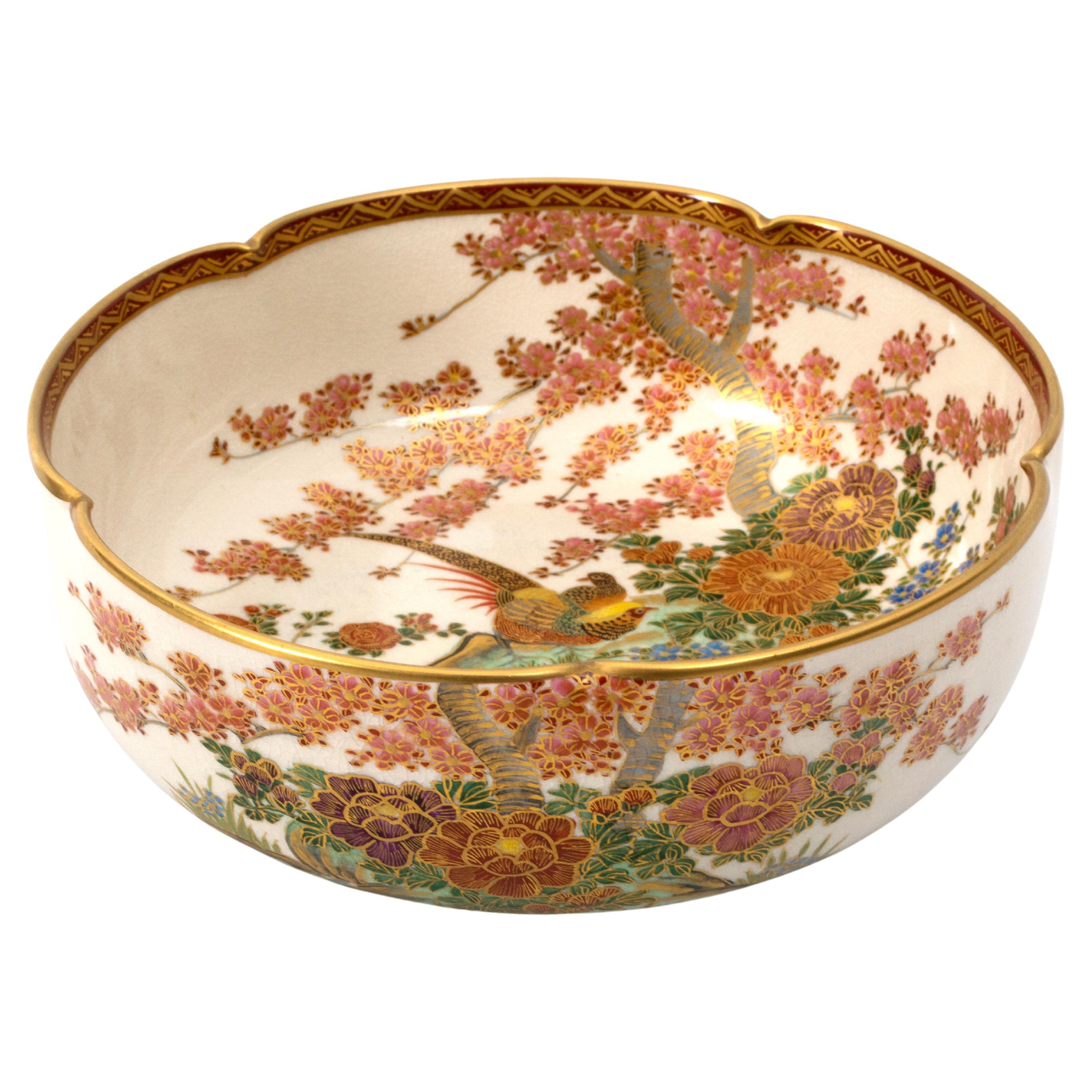Items Similar to Japanese Antique Kakiemon Plate from Arita
Want more images or videos?
Request additional images or videos from the seller
1 of 9
Japanese Antique Kakiemon Plate from Arita
About the Item
A milky white dish with slight scalloped rim and decorated with cobalt blue iron red and green enamel over glaze, this delicate piece in Kakiemon Style was dated at least to the early 18th century if not earlier, likely made for export market to the west. The top surface of the plate features a sparse and a slightly asymmetrical arrangement of wheat sheaf bundles and prunus branches. The base was marked with six Chinese character "Qi Yu Bao Ding Zhi Zhen", a mark that was used in the non-royal kilns during the reign of Kang Xi in Qing Dynasty (1661 to 1722). This mark was used both during and after the reign in China and sometimes in Japan, thus not an indication of date or origin.
Provenance: Former collection the Mobile Museum of Art, Mobile, AL, acquired in 1977 purportedly. ,
Background: From the mid-17th century, Kakiemon wares were produced at the factories of Arita, Saga Prefecture, Japan with much in common with the Chinese "Famille Verte" style. The superb quality of its enamel decoration was highly prized in the West and widely imitated by the major European porcelain manufacturers. Similar designs can be found on copied on pieces produced by Meissen in the middle of 18th century, suggesting the age of this piece predating mid-18th century. By Mid-18th century, the export of porcelain from Japan was halted.
- Dimensions:Height: 1 in (2.54 cm)Diameter: 8.85 in (22.48 cm)
- Style:Japonisme (Of the Period)
- Materials and Techniques:Porcelain,Enameled
- Place of Origin:
- Period:
- Date of Manufacture:18th Century
- Condition:Wear consistent with age and use. Fine antique condition.
- Seller Location:Atlanta, GA
- Reference Number:1stDibs: LU945014332332
About the Seller
5.0
Platinum Seller
These expertly vetted sellers are 1stDibs' most experienced sellers and are rated highest by our customers.
Established in 2006
1stDibs seller since 2010
478 sales on 1stDibs
Typical response time: <1 hour
- ShippingRetrieving quote...Ships From: Atlanta, GA
- Return PolicyA return for this item may be initiated within 2 days of delivery.
More From This SellerView All
- Massive Japanese Arita Presentation Porcelain Plate Meiji PeriodLocated in Atlanta, GAThis massive Japanese Arita plate was made in Hizen, circa 1890-1910s, at the end of Meiji period by a potter named Takeshige Yoshisuke who was active in A...Category
Antique Late 19th Century Japanese Japonisme Ceramics
- Japanese Porcelain PlateLocated in Atlanta, GAAn Japanese porcelain plate circa 1930s-1940s. Decorated with over glaze featuring three ladies in waiting. In the garden, the rock grottoes, a cherry tree in blossom, a half hidden banana tree and a few peeking peonies, suggest a subtropical scenery. The ladies were pictured as holding various item, a fly...Category
Early 20th Century Japanese Japonisme Ceramics
MaterialsCeramic
- A Massive Antique Japanese Arita Porcelain Plate by Kajiwara KilnLocated in Atlanta, GAOn offer is a truly impressive blue and white porcelain plate of Hizen ware, from Arita in Japan, circa mid to late-19th century. The plate was made by Kajiwara Kikujiro (菊次郎, the second Kiku son) and/or Kajiwara Kikusaburo (菊三郎, the third Kiku son who died in 1883) of the Kajiware Family Kiln of in Arita. It was decorated in a superb design with blue under-glaze, clearly out of a hand of a master. In a Classic Japanese composition that was popular in the Meiji Period, the plate displays a riot of auspicious elements, arranged still in a surprisingly harmonious manner. Anchoring the center of the design is an eagle perched on the branch of a blooming cherry tree, its talons clenching the bark and its wings about to open. The motion of the its immediate taking off is palpable. The trunk and the branches of the old cherry tree provide a spacial frame for the arrangement of large peonies with foliage, bundles of chrysanthemums, Chinese bell...Category
Antique 19th Century Japanese Japonisme Ceramics
MaterialsCeramic
- Japanese Yoshidaya Saiko Kutani Ceramic DishBy YoshidayaLocated in Atlanta, GAA Japanese Ao-Kutani stoneware dish with overglaze decoration in the shape of barbed quatrefoil shape from late Edo period, circa early mid-19th century. Around 1804, 100 years after Ko-Kutani (old-Kutani) ware disappeared abruptly after thriving from 1655-early 1700s, saiko-kutani (revived-kutani) was attempted by many kilns and several distinguished styles developed. Among them, Yoshidaya kiln attempted to revive the original style of Ko-Kutani known as Aote, which employed four dark colors: green, yellow, dark blue/black and aubergine to create bold and striking design. The Yoshidaya production was short-lived and lasted roughly from 1823-1831. This dish is likely dated from this period or shortly after. The overglaze design centered around a crouching tiger under a black bamboo grove in a deep green background, surrounded by luxuriant banana leaves in green and aubergine with black outlines. The base of a similar concentric barbed quatrefoil design is further decorated with black foliage outlines and marked with a square Fuku mark. For a Yoshidaya dish with identical shape but different landscape decoration, see lot 79 of sale 6547 Christie's London. Important Japanese and Chinese Art...Category
Antique 19th Century Japanese Japonisme Ceramics
MaterialsCeramic
- Near Pair of Antique Japanese Arita Export Ceramic JarsLocated in Atlanta, GAA near pair Hizen pottery jars from Artia Japan, circa mid-19th century of the Meiji Era. Heavy stoneware construction with overglaze enamels that was inspired by Chinese WuCai from ...Category
Antique Mid-19th Century Japanese Japonisme Ceramics
MaterialsCeramic
- Japanese Studio Ceramic Centerpiece Okumura Shozan Meiji PeriodLocated in Atlanta, GAA beautifully crafted large ceramic bowl as a centerpiece by Okumura Shozan (1842-1905) in the Kyo-yaki (kyoto ware) style. A Classic ovoid form with flatly...Category
Antique Late 19th Century Japanese Japonisme Ceramics
MaterialsCeramic
You May Also Like
- Massive Antique Japanese Arita Porcelain Emperor MeijiBy AritaLocated in Hillringsberg, SEThis very large plate made in Japan during the Emperor Meiji time 1868-1912. Wonderful blue pattern on fine porcelain. There is a crack that’s shown thro...Category
Antique 19th Century Japanese Japonisme Ceramics
MaterialsCeramic
- Antique Japanese Lobed Satsuma Bowl Meiji Period C.1900Located in London, GBAntique Japanese Lobed Satsuma Bowl Meiji Period C.1900 A Kobe Japan Satsuma bowl, of lobed pedestal form hand painted inside and out. A hand-painted natu...Category
Early 20th Century Japanese Ceramics
MaterialsEarthenware
- Japanese Imari Bowl Centerpiece with French Ormolu Mounts, circa 1900Located in Austin, TXAn elegant French Louis XVI style Japonisme centerpiece comprised of a large 19th century Meiji Period Japanese Imari Porcelain bowl with French gilt metal ormolu mounts, late 19th-e...Category
Antique Late 19th Century French Japonisme Centerpieces
MaterialsOrmolu
- Japanese Arita Porcelain Tray 'Pliage'By Hands On Design, Denis GuidoneLocated in Milan, ITThis tray is designed by Denis Guidone and handmade in Japan by Risogama for Hands on Design, a traditional pottery. It reminds the Japanese tradition of Origami, the designer uses the white Arita porcelain...Category
2010s Japanese Centerpieces
MaterialsPorcelain
- Japanese Arita Porcelain Centerpiece 'Pliage'By Hands On Design, Denis GuidoneLocated in Milan, ITThis centerpiece is designed by Denis Guidone and handmade in Japan by Risogama for Hands on design, a traditional pottery. It reminds the Japanese tradition of Origami, the designer uses the white Arita porcelain like...Category
2010s Japanese Centerpieces
MaterialsPorcelain
- Unusual Antique 1690-1720 Japanese Imari Mustard Pots Arita Edo JapanLocated in Amsterdam, Noord HollandGratefull to share these two small mustard pots with you. Ca 1690-1720. Miniature mustard pot of baluster shape moulded as an opening lotus flower, on a ribbed conical stem. Curve...Category
Antique 17th Century Japanese Edo Ceramics
MaterialsPorcelain





